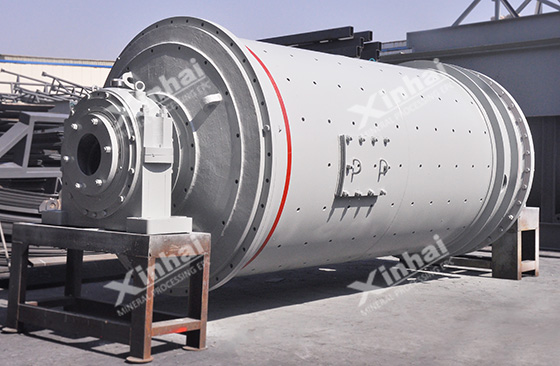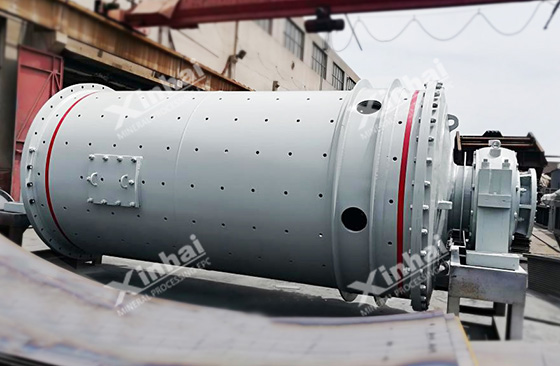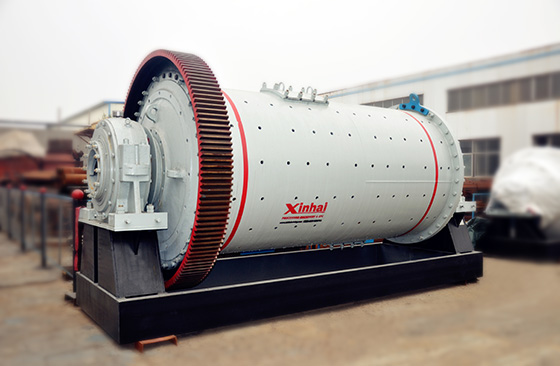
Ball mill is the main equipment used for grinding operations in many industries, such as mining, construction, ceramics, glass industry. The useful blocks are ground to powder by the ball mill.
According to different grinding conditions, the ball mill can be divided into dry ball mill and wet ball mill. The biggest difference between dry ball mill and wet ball mill is that the wet ball mill runs in wet conditions, while the dry ball mill runs in dry conditions. Besides, what're the other differences between the two ball mills, and how to choose them?
1. Wet grinding of wet ball mill
Wet grinding of wet ball mill refers that the material is ground in the ball mill under the interaction of the grinding medium and itself. At the same time, the water flow (or anhydrous ethanol) participates in the whole grinding process, and the movement of the material is driven by the water flow.
2. Dry grinding of dry ball mill
Dry grinding of dry ball mill refers that the material is ground in the ball mill without the water flow, and is to tube in vitro drawn airflow away when the material meets the requirements.

1. The difference in structure between dry ball mill and wet ball mill
The shape and parts of wet ball mill and dry ball mill are basically same, the cylinder body is cylindrical, and the structure mainly includes feeding port, discharging port, rotary part, transmission part (reducer, small transmission gear, motor, electric control).
The difference is that the structure of wet ball mill is relatively simple without too many auxiliary accessories, the discharging port is the horn shape, the double spiral built-in ore drainage facilities make the ore drainage more convenient. The structure of dry ball mill is more complex, the discharging port is a straight cylindrical, there are no wind device, dust pipe and dust collector in the dry ball mill.
2. The difference in working principle between dry ball mill and wet ball mill
The working principle of ball mill is to use the transmission machinery to drive the barrel body to rotate, the material is fed from the feeding port. Under the action of centrifugal force, make the steel ball inside the barrel body, the material and the lining board impact, so the grinding operation is completed.
The wet ball mill needs to work with water to reach the appropriate concentration. The qualified materials will be discharged through the drainage section, and the unqualified materials will be returned to the wet ball mill for regrinding until they meet the requirements.
When the dry ball mill runs, the material enters to the hollow shaft from the feeding device. The hollow shaft performs uniform spiral operation and sends the material into the first bin. The bin is equipped with the stepped lining board (or corrugated lining board), and the bin is equipped with steel balls of different specifications. The steel ball inside the barrel body, the material and the lining board impact, so the grinding operation is completed.

3. The difference in characteristics between dry ball mill and wet ball mill
Wet ball mill has strong adaptability to materials, continuous production, large crushing ratio, easy to adjust the abrasive fineness, high grinding efficiency, low requirements for ore moisture content. In addition, the material transport device of wet ball mill is simple, so the investment of wet ball mill is about 5%-10% lower than that of dry ball mill.
The dry ball mill adopts grate plate forcing discharge mode, the discharging is smoother, the cylinder does not need cooling, and the material has the weak wear on the lining plate and grinding medium in the fine grinding process, long service life, low failure rate. But because of the barrel design, the dry ball mill occasionally will form a dead corner, and the material in the dead corner is not easy to be ground.
4. The difference in application between dry ball mill and wet ball mill
Wet ball mill has a wide range of applications, which can be used to deal with a variety of metal, non-metallic minerals, including gold, silver, copper, iron, phosphorus, molybdenum, feldspar, fluorite, etc.
Dry ball mill can also be used for the grinding operations of a variety of metal ore, non-metal ore, but more used for the material that can react with the water, such as cement, marble and other building stone, or the products that are required in the form of powder for storage and sales.

1. Wet ball mill
It is necessary to ensure that the materials will not react with the water, thus affecting the quality of final products of wet ball mill. The requirement of particle size is fine. The investment environment is nice and the requirements of mineral processing are high.
2.Dry ball mill
The materials may cause physical or chemical reactions when it is exposed to water. The requirement of particle size is not very fine. The materials that need to be stored or sold in powder form (such as the grinding of glazes and pigments).
In addition, for some dry areas that the water resources are relatively scarce, the dry ball mill can be adopted in consideration of water conservation conditions.
The above is the simple introduction of wet ball mill and dry ball mill, the differences and selection conditions of wet ball mill and dry ball mill. In fact, how to correctly choose the ball mill depends on the requirements of the subsequent operation of the ball mill or the conditions at that time. Only to find the grinding way used for the material, can choose the correct grinding mill.
To find out more about our products and solutions, please fill out the form below and one of our experts will get back to you shortly.